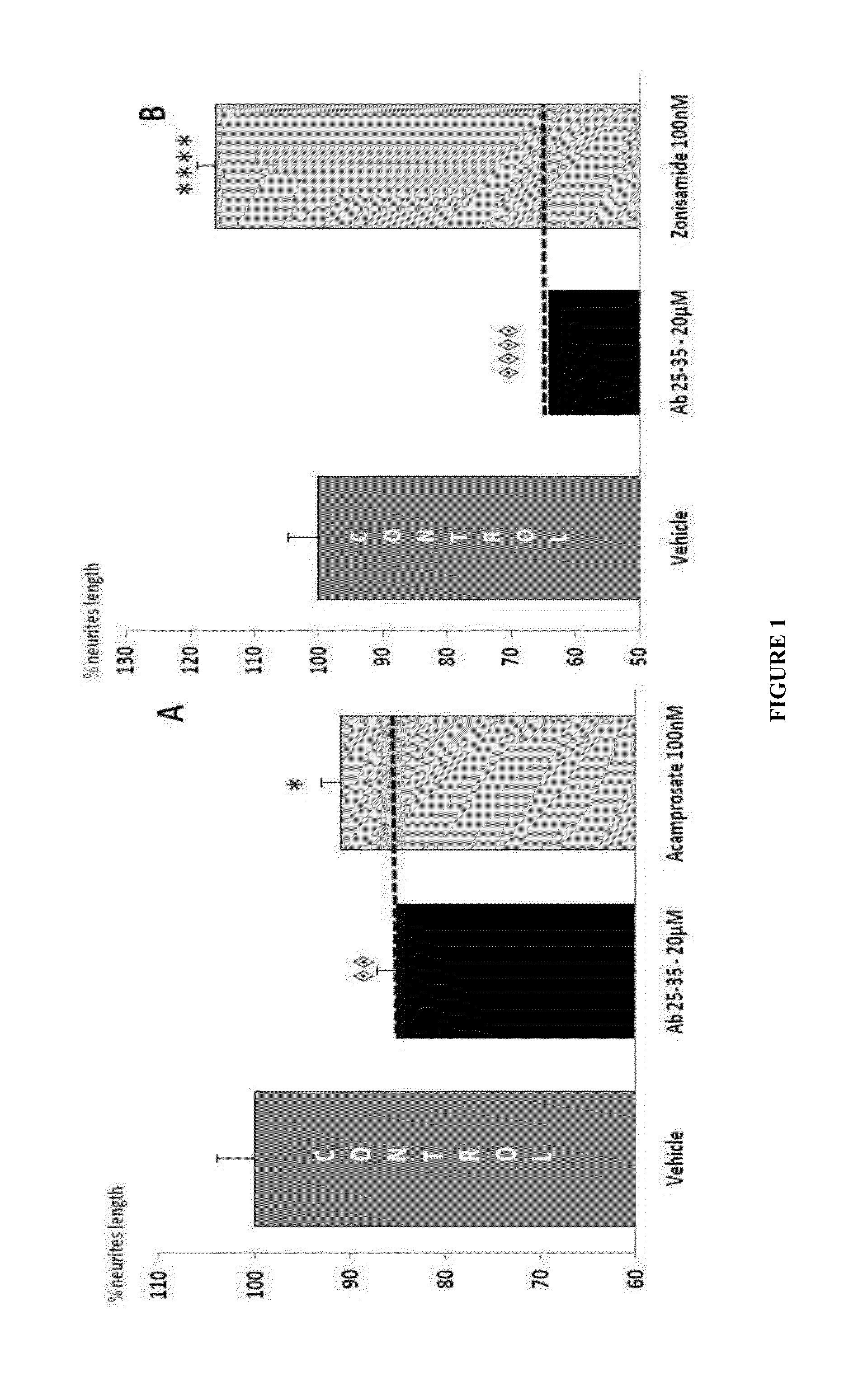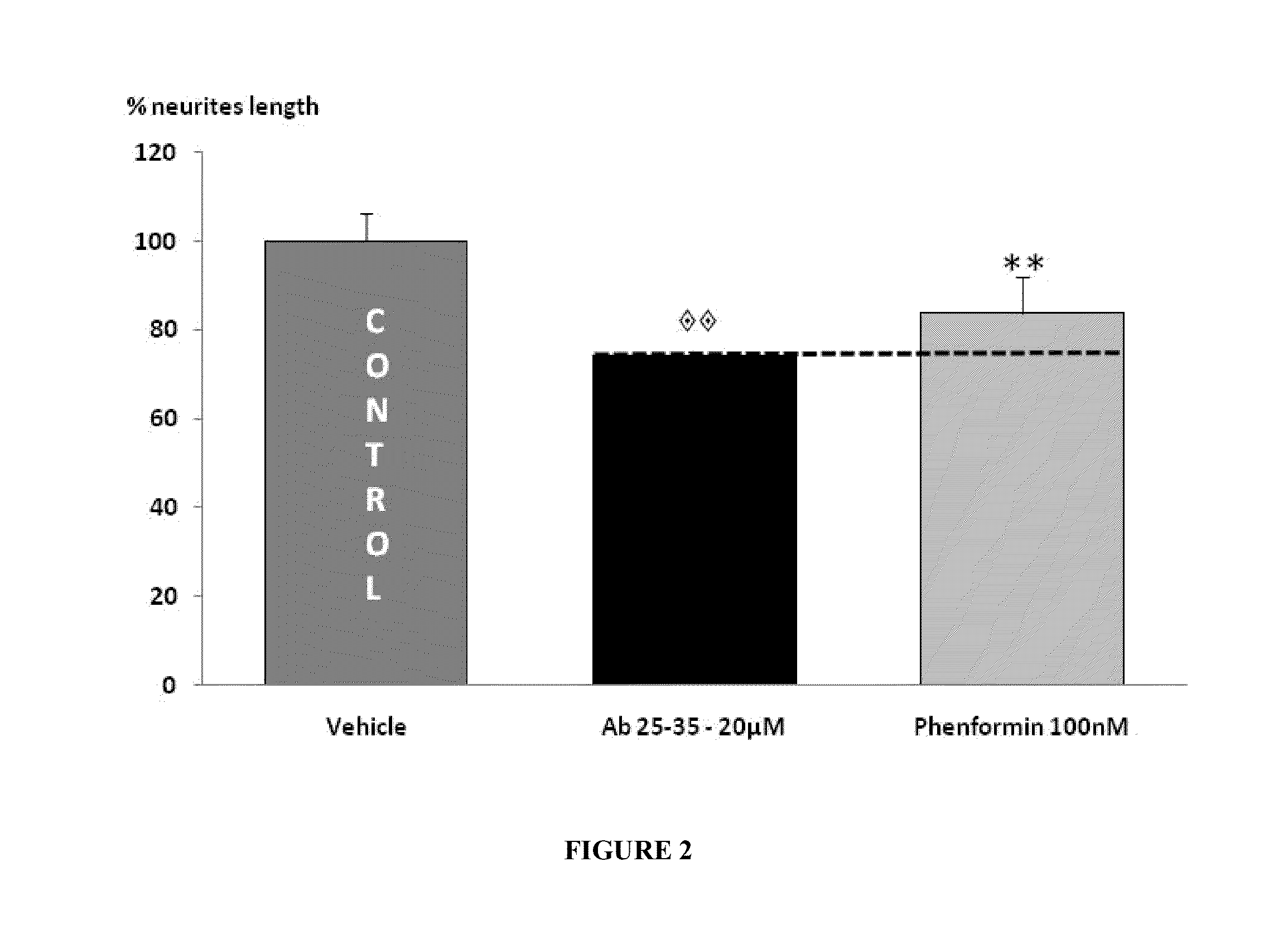Therapeutic approaches for treating alzheimer's disease
a technology for alzheimer's and other disorders, applied in the field of combinatorial therapies for alzheimer's disease and related disorders, can solve the problems of severe affecting medical, monetary and human resources, and the number of people requiring constant care and other services, and achieve the effect of affecting the pathways involved in ad
- Summary
- Abstract
- Description
- Claims
- Application Information
AI Technical Summary
Benefits of technology
Problems solved by technology
Method used
Image
Examples
examples
I. The Compounds and Combinations Thereof Prevent Toxicity of Aβ25-35 Peptide
[0307]In this first series of experiments, candidate compounds have been tested for their ability to prevent or reduce the toxic effects of Aβ25-35 peptide. The drugs are first tested individually, followed by assays of their combinatorial action. The effect is determined on various cell types, to further illustrate the activity of the compounds.
[0308]In AD, the APP protein forms aggregates of insoluble β-pleated sheets of fibrillar Abeta protein (amyloid). The conformational change from soluble to fibrillar forms seems to be a spontaneous event that is increased with higher concentrations of Abeta, so any production of larger amounts of Abeta than normal (or production of the larger, less soluble forms of Abeta) will tend to increase plaque formation. Once the Abeta plaque has started to form, other molecules can interact with the nascent plaque to produce eventually the mature plaque with its associated a...
PUM
| Property | Measurement | Unit |
|---|---|---|
| Toxicity | aaaaa | aaaaa |
Abstract
Description
Claims
Application Information
 Login to View More
Login to View More - R&D
- Intellectual Property
- Life Sciences
- Materials
- Tech Scout
- Unparalleled Data Quality
- Higher Quality Content
- 60% Fewer Hallucinations
Browse by: Latest US Patents, China's latest patents, Technical Efficacy Thesaurus, Application Domain, Technology Topic, Popular Technical Reports.
© 2025 PatSnap. All rights reserved.Legal|Privacy policy|Modern Slavery Act Transparency Statement|Sitemap|About US| Contact US: help@patsnap.com



